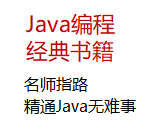|
|
Kafka简介 消息队列(Message Queue) 消息 Message
网络中的两台计算机或者两个通讯设备之间传递的数据。例如说:文本、音乐、视频等内容。
队列 Queue
一种特殊的线性表(数据元素首尾相接),特殊之处在于只允许在首部删除元素和在尾部追加元素。入队、出队。
消息队列 MQ
消息+队列,保存消息的队列。消息的传输过程中的容器;主要提供生产、消费接口供外部调用做数据的存储和获取。 |
MQ分类 MQ主要分为两类:点对点(p2p)、发布订阅(Pub/Sub)
共同点:
消息生产者生产消息发送到queue中,然后消息消费者从queue中读取并且消费消息。
不同点:
p2p模型包括:消息队列(Queue)、发送者(Sender)、接收者(Receiver)
一个生产者生产的消息只有一个消费者(Consumer)(即一旦被消费,消息就不在消息队列中)。比如说打电话。
Pub/Sub包含:消息队列(Queue)、主题(Topic)、发布者(Publisher)、订阅者(Subscriber)
每个消息可以有多个消费者,彼此互不影响。比如我发布一个微博:关注我的人都能够看到。
那么在大数据领域呢,为了满足日益增长的数据量,也有一款可以满足百万级别消息的生成和消费,分布式、持久稳定的产品——Kafka。 |
Kafka简介 Kafka是分布式的发布—订阅消息系统。它最初由LinkedIn(领英)公司发布,使用Scala语言编写,与2010年12月份开源,成为Apache的顶级项目。
Kafka是一个高吞吐量的、持久性的、分布式发布订阅消息系统。
它主要用于处理活跃的数据(登录、浏览、点击、分享、喜欢等用户行为产生的数据)。
三大特点:
高吞吐量
可以满足每秒百万级别消息的生产和消费——生产消费。QPS
持久性
有一套完善的消息存储机制,确保数据的高效安全的持久化——中间存储。
分布式
基于分布式的扩展和容错机制;Kafka的数据都会复制到几台服务器上。当某一台故障失效时,生产者和消费者转而使用其它的机器——整体健壮性。 |
Kafka组件 一个MQ需要哪些部分?生产、消费、消息类别、存储等等。
对于kafka而言,kafka服务就像是一个大的水池。不断的生产、存储、消费着各种类别的消息。那么kafka由何组成呢?
> Kafka服务:
> Topic:主题,Kafka处理的消息的不同分类。
> Broker:消息代理,Kafka集群中的一个kafka服务节点称为一个broker,主要存储消息数据。存在硬盘中。每个topic都是有分区的。
> Partition:Topic物理上的分组,一个topic在broker中被分为1个或者多个partition,分区在创建topic的时候指定。
> Message:消息,是通信的基本单位,每个消息都属于一个partition
> Kafka服务相关
> Producer:消息和数据的生产者,向Kafka的一个topic发布消息。
> Consumer:消息和数据的消费者,定于topic并处理其发布的消息。
> Zookeeper:协调kafka的正常运行。 |
Broker Broker:配置文件server.properties
1、为了减少磁盘写入的次数,broker会将消息暂时buffer起来,当消息的个数达到一定阀值或者过了一定的时间间隔时,再flush到磁盘,这样减少了磁盘IO调用的次数。
配置:Log Flush Policy
#log.flush.interval.messages=10000 一个分区的消息数阀值
#log.flush.interval.ms=1000
2、kafka的消息保存一定时间(通常为7天)后会被删除。
配置:Log Retention Policy
log.retention.hours=168
#log.retention.bytes=1073741824
log.retention.check.interval.ms=300000 |
Producer Producer:配置文件:producer.properties
1、自定义partition
Producer也根据用户设置的算法来根据消息的key来计算输入哪个partition:partitioner.class
2、异步或者同步发送
配置项:producer.type
异步或者同步发送
同步是指:发送方发出数据后,等接收方发回响应以后才发下一个数据的通讯方式。
异步是指:发送方发出数据后,不等接收方发回响应,接着发送下个数据的通讯方式。
3、批量发送可以很有效的提高发送效率。
Kafka producer的异步发送模式允许进行批量发送,先将消息缓存在内存中,然后一次请求批量发送出去。
具体配置queue.buffering.max.ms、queue.buffering.max.messages。
默认值分别为5000和10000 |
Consumer consumers:配置文件:consumer.properties
1、每个consumer属于一个consumer group,可以指定组id。group.id
2、消费形式:
组内:组内的消费者消费同一份数据;同时只能有一个consumer消费一个Topic中的1个partition;一个consumer可以消费多个partitions中的消息。
所以,对于一个topic,同一个group中推荐不能有多于partitions个数的consumer同时消费,否则将意味着某些consumer将无法得到消息。
组间:每个消费组消费相同的数据,互不影响。
3、在一个consumer多个线程的情况下,一个线程相当于一个消费者。
例如:partition为3,一个consumer起了3个线程消费,另一个后来的consumer就无法消费。
(这是Kafka用来实现一个Topic消息的广播(发给所有的Consumer)和单播(发给某一个Consumer)的手段。
一个Topic可以对应多个Consumer Group。如果需要实现广播,只要每个Consumer有一个独立的Group就可以了。
要实现单播只要所有的Consumer在同一个Group里。用Consumer Group还可以将Consumer进行自由的分组而不需要多次发送消息到不同的Topic。) |
topic、partition、message 1、每个partition在存储层面是append log文件。新消息都会被直接追加到log文件的尾部,每条消息在log文件中的位置称为offset(偏移量)。
2、每条Message包含了以下三个属性:
1°、offset 对应类型:long 此消息在一个partition中序号。可以认为offset是partition中Message的id
2°、MessageSize 对应类型:int32 此消息的字节大小。
3°、data 是message的具体内容。
3、越多的partitions意味着可以容纳更多的consumer,有效提升并发消费的能力。
4、总之:业务区分增加topic、数据量大增加partition。 |
Kafka安装配置 解压: [uplooking@uplooking01 ~]$ tar -zxvf soft/kafka_2.10-0.10.0.1.tgz -C app/
重命名:[uplooking@uplooking01 ~]$ mv app/kafka_2.10-0.10.0.1/ app/kafka
添加KAFKA_HOME至环境变量:~/.bash_profile
export KAFKA_HOME=/home/uplooking/app/kafka
export PATH=$PATH:$KAFKA_HOME/bin
source ~/.bash_profile
配置相关参数:$KAFKA_HOME/config/server.properties
主要参数:broker.id、log.dirs、zookeeper.connect
broker.id=10
log.dirs=/home/uplooking/data/kafka [kafka数据的存放目录]
zookeeper.connect=uplooking01:2181,uplooking02:2181,uplooking03:2181
kafka实例broker监听默认端口9092,配置listeners=PLAINTEXT://:9092
启动:
$KAFKA_HOME/bin/kafka-server-start.sh [-daemon] $KAFKA_HOME/config/server.properties
-daemon 可选,表示后台启动kafka服务 |
当然,kafka的配置文件也非常重要,有必要对其中的内容学习一下,这里给出其配置文件的说明:
# Licensed to the Apache Software Foundation (ASF) under one or more
# contributor license agreements. See the NOTICE file distributed with
# this work for additional information regarding copyright ownership.
# The ASF licenses this file to You under the Apache License, Version 2.0
# (the "License"); you may not use this file except in compliance with
# the License. You may obtain a copy of the License at
#
# http://www.apache.org/licenses/LICENSE-2.0
#
# Unless required by applicable law or agreed to in writing, software
# distributed under the License is distributed on an "AS IS" BASIS,
# WITHOUT WARRANTIES OR CONDITIONS OF ANY KIND, either express or implied.
# See the License for the specific language governing permissions and
# limitations under the License.
# see kafka.server.KafkaConfig for additional details and defaults
############################# Server Basics #############################
##################################################################################
# broker就是一个kafka的部署实例,在一个kafka集群中,每一台kafka都要有一个broker.id
# 并且,该id唯一,且必须为整数
##################################################################################
broker.id=10
############################# Socket Server Settings #############################
# The address the socket server listens on. It will get the value returned from
# java.net.InetAddress.getCanonicalHostName() if not configured.
# FORMAT:
# listeners = security_protocol://host_name:port
# EXAMPLE:
# listeners = PLAINTEXT://your.host.name:9092
#listeners=PLAINTEXT://:9092
# Hostname and port the broker will advertise to producers and consumers. If not set,
# it uses the value for "listeners" if configured. Otherwise, it will use the value
# returned from java.net.InetAddress.getCanonicalHostName().
#advertised.listeners=PLAINTEXT://your.host.name:9092
##################################################################################
#The number of threads handling network requests
# 默认处理网络请求的线程个数 3个
##################################################################################
num.network.threads=3
##################################################################################
# The number of threads doing disk I/O
# 执行磁盘IO操作的默认线程个数 8
##################################################################################
num.io.threads=8
##################################################################################
# The send buffer (SO_SNDBUF) used by the socket server
# socket服务使用的进行发送数据的缓冲区大小,默认100kb
##################################################################################
socket.send.buffer.bytes=102400
##################################################################################
# The receive buffer (SO_SNDBUF) used by the socket server
# socket服务使用的进行接受数据的缓冲区大小,默认100kb
##################################################################################
socket.receive.buffer.bytes=102400
##################################################################################
# The maximum size of a request that the socket server will accept (protection against OOM)
# socket服务所能够接受的最大的请求量,防止出现OOM(Out of memory)内存溢出,默认值为:100m
# (应该是socker server所能接受的一个请求的最大大小,默认为100M)
##################################################################################
socket.request.max.bytes=104857600
############################# Log Basics (数据相关部分,kafka的数据称为log)#############################
##################################################################################
# A comma seperated list of directories under which to store log files
# 一个用逗号分隔的目录列表,用于存储kafka接受到的数据
##################################################################################
log.dirs=/home/uplooking/data/kafka
##################################################################################
# The default number of log partitions per topic. More partitions allow greater
# parallelism for consumption, but this will also result in more files across
# the brokers.
# 每一个topic所对应的log的partition分区数目,默认1个。更多的partition数目会提高消费
# 并行度,但是也会导致在kafka集群中有更多的文件进行传输
# (partition就是分布式存储,相当于是把一份数据分开几份来进行存储,即划分块、划分分区的意思)
##################################################################################
num.partitions=1
##################################################################################
# The number of threads per data directory to be used for log recovery at startup and flushing at shutdown.
# This value is recommended to be increased for installations with data dirs located in RAID array.
# 每一个数据目录用于在启动kafka时恢复数据和在关闭时刷新数据的线程个数。如果kafka数据存储在磁盘阵列中
# 建议此值可以调整更大。
##################################################################################
num.recovery.threads.per.data.dir=1
############################# Log Flush Policy (数据刷新策略)#############################
# Messages are immediately written to the filesystem but by default we only fsync() to sync
# the OS cache lazily. The following configurations control the flush of data to disk.
# There are a few important trade-offs(平衡) here:
# 1. Durability 持久性: Unflushed data may be lost if you are not using replication.
# 2. Latency 延时性: Very large flush intervals may lead to latency spikes when the flush does occur as there will be a lot of data to flush.
# 3. Throughput 吞吐量: The flush is generally the most expensive operation, and a small flush interval may lead to exceessive seeks.
# The settings below allow one to configure the flush policy to flush data after a period of time or
# every N messages (or both). This can be done globally and overridden on a per-topic basis.
# kafka中只有基于消息条数和时间间隔数来制定数据刷新策略,而没有大小的选项,这两个选项可以选择配置一个
# 当然也可以两个都配置,默认情况下两个都配置,配置如下。
# The number of messages to accept before forcing a flush of data to disk
# 消息刷新到磁盘中的消息条数阈值
#log.flush.interval.messages=10000
# The maximum amount of time a message can sit in a log before we force a flush
# 消息刷新到磁盘生成一个log数据文件的时间间隔
#log.flush.interval.ms=1000
############################# Log Retention Policy(数据保留策略) #############################
# The following configurations control the disposal(清理) of log segments(分片). The policy can
# be set to delete segments after a period of time, or after a given size has accumulated(累积).
# A segment will be deleted whenever(无论什么时间) *either* of these criteria(标准) are met. Deletion always happens
# from the end of the log.
# 下面的配置用于控制数据片段的清理,只要满足其中一个策略(基于时间或基于大小),分片就会被删除
# The minimum age of a log file to be eligible for deletion
# 基于时间的策略,删除日志数据的时间,默认保存7天
log.retention.hours=168
# A size-based retention policy for logs. Segments are pruned from the log as long as the remaining
# segments don't drop below log.retention.bytes. 1G
# 基于大小的策略,1G
#log.retention.bytes=1073741824
# The maximum size of a log segment file. When this size is reached a new log segment will be created.
# 数据分片策略
log.segment.bytes=1073741824
# The interval at which log segments are checked to see if they can be deleted according
# to the retention policies 5分钟
# 每隔多长时间检测数据是否达到删除条件
log.retention.check.interval.ms=300000
############################# Zookeeper #############################
# Zookeeper connection string (see zookeeper docs for details).
# This is a comma separated host:port pairs, each corresponding to a zk
# server. e.g. "127.0.0.1:3000,127.0.0.1:3001,127.0.0.1:3002".
# You can also append an optional chroot string to the urls to specify the
# root directory for all kafka znodes.
zookeeper.connect=uplooking01:2181,uplooking02:2181,uplooking03:2181
# Timeout in ms for connecting to zookeeper
zookeeper.connection.timeout.ms=6000 |
另外需要注意的是,kafka启动后,会在zookeeper中创建相关的节点:
[zk: localhost:2181(CONNECTED) 1] ls /
[controller, brokers, zookeeper, yarn-leader-election, hadoop-ha, admin, isr_change_notification, consumers, config, hbase]
[zk: localhost:2181(CONNECTED) 5] get /brokers/ids/10
{"jmx_port":-1,"timestamp":"1521936591128","endpoints":["PLAINTEXT:,"host":"uplooking01","version":3,"port":9092}
cZxid = 0xa000000c1
ctime = Sun Mar 25 08:09:50 CST 2018
mZxid = 0xa000000c1
mtime = Sun Mar 25 08:09:50 CST 2018
pZxid = 0xa000000c1
cversion = 0
dataVersion = 0
aclVersion = 0
ephemeralOwner = 0x6762543b71390005
dataLength = 133
numChildren = 0 |
Kafka操作 topic操作 创建Topic:
kafka-topics.sh --create --topic hadoop --zookeeper uplooking01:2181,uplooking02:2181,uplooking03:2181 --partitions 1 --replication-factor 1
kafka-topics.sh --create --topic hive --zookeeper uplooking01:2181 --partitions 1 --replication-factor 1
kafka-topics.sh --create --topic hbase --zookeeper uplooking01:2181 --partitions 3 --replication-factor 1
创建topic过程的问题,replication-factor个数不能超过broker的个数
bin/kafka-topics.sh --create --topic sqoop --zookeeper uplooking01:2181 --partitions 3 --replication-factor 3
Error while executing topic command : replication factor: 3 larger than available brokers: 1
另外,在创建topic后,可以在/home/uplooking/data/kafka目录查看到分区的目录,
有多少个分区就会相应创建多少个目录。 |
uplooking01:2181,uplooking02:2181,uplooking03:2181 可以只写一个,为了做笔记方便,后面只写一个。
查看Topic列表:
| kafka-topics.sh --list --zookeeper uplooking01:2181 |
查看某一个具体的Topic:
kafka-topics.sh --describe xxx --zookeeper uplooking01:2181
Topic:xxx PartitionCount:3 ReplicationFactor:1 Configs:
Topic: xxx Partition: 0 Leader: 10 Replicas: 10 Isr: 10
Topic: xxx Partition: 1 Leader: 10 Replicas: 10 Isr: 10
Topic: xxx Partition: 2 Leader: 10 Replicas: 10 Isr: 10
PartitionCount:topic对应的partition的个数
ReplicationFactor:topic对应的副本因子,说白就是副本个数
Partition:partition编号,从0开始递增
Leader:当前partition起作用的breaker.id
Replicas: 当前副本数据坐在的breaker.id,是一个列表,排在最前面的起作用
Isr:当前kakfa集群中可用的breaker.id列表 |
修改Topic:
不能修改replication-factor,以及只能对partition个数进行增加,不能减少
kafka-topics.sh --alter --topic hive --zookeeper uplooking01:2181 --partitions 3
partition由3变为2的时,抛出的异常:
ERROR kafka.admin.AdminOperationException: The number of partitions for a topic can only be increased |
删除Topic:
kafka-topics.sh --delete --topic hbase --zookeeper uplooking01:2181
Topic hbase is marked for deletion.
Note: This will have no impact if delete.topic.enable is not set to true.
彻底删除一个topic,需要在server.properties中配置delete.topic.enable=true,否则只是标记删除
配置完成之后,需要重启kafka服务。 |
生产者消费者案例 使用kafka提供的标准生产消费脚本。
生产数据:
kafka-console-producer.sh --broker-list uplooking01:9092 --topic hadoop
生产数据的时候需要指定:当前数据流向哪个broker,以及哪一个topic |
消费数据:
kafka-console-consumer.sh --topic hadoop --zookeeper uplooking01:2181
说明:该消费语句,只能获取最新的数据,要想历史数据,需要添加选项--from-beginning
/kafka-console-consumer.sh --topic hadoop --zookeeper uplooking01:2181 --from-beginning
在消费数据的时候,只需要指定topic,以及topic的元数据信息即可(在ZK中存放),所以这里需要使用zk |
消费者--黑名单(blacklist)和白名单(whitelist)选项:
--blacklist 后面跟需要过滤的topic的列表,使用","隔开,意思是除了列表中的topic之外,都能接收其它topic的数据
--whitelist 后面跟需要过滤的topic的列表,使用","隔开,意思是除了列表中的topic之外,都不能接收其它topic的数据
eg:
kafka-console-consumer.sh --zookeeper uplooking01:2181 --from-beginning --blacklist hadoop,hive
kafka-console-consumer.sh --zookeeper uplooking01:2181 --from-beginning --whitelist hadoop,flume |
kafka分布式环境搭建与概念验证 kafka中没有主从节点的概念,因此只需要将kafka安装目录拷贝到其它节点上即可,不过需要注意的是,需要修改brokerId为唯一的:
scp -r /home/uplooking/app/kafka/ uplooking@uplooking02:/home/uplooking/app
scp -r /home/uplooking/app/kafka/ uplooking@uplooking03:/home/uplooking/app |
为了方便后面理解kafka的相关概念,这里将uplooking01、uplooking02、uplooking03的brokerId分别修改为101、102、103.
在三个节点上分别启动kafka:
| kafka-server-start.sh -daemon app/kafka/config/server.properties |
创建一个topic:
| kafka-topics.sh --create --topic hadoop --partitions 3 --replication-factor 3 --zookeeper uplooking01:2181,uplooking02:2181,uplooking03:2181 |
查看该topic的详细信息:
[uplooking@uplooking01 ~]$ kafka-topics.sh --describe hbase --zookeeper uplooking01:2181,uplooking02:2181,uplooking03:2181
Topic:hadoop PartitionCount:3 ReplicationFactor:3 Configs:
Topic: hadoop Partition: 0 Leader: 101 Replicas: 101,102,103 Isr: 101,102,103
Topic: hadoop Partition: 1 Leader: 102 Replicas: 102,103,101 Isr: 102,103,101
Topic: hadoop Partition: 2 Leader: 103 Replicas: 103,101,102 Isr: 103,101,102
再查看前面的解释:
PartitionCount:topic对应的partition的个数
ReplicationFactor:topic对应的副本因子,说白就是副本个数
Partition:partition编号,从0开始递增
Leader:当前partition起作用的breaker.id
Replicas: 当前副本数据坐在的breaker.id,是一个列表,排在最前面的起作用
Isr:当前kakfa集群中可用的breaker.id列表
这样就很容易理解了。 |
这意味着,三个分区在三个节点上都有保存数据的,可以分别在每个节点上查看相关的分区数据信息:
[uplooking@uplooking01 kafka]$ ll
总用量 24
-rw-rw-r-- 1 uplooking uplooking 0 3月 25 19:33 cleaner-offset-checkpoint
drwxrwxr-x 2 uplooking uplooking 4096 3月 25 19:33 hadoop-0
drwxrwxr-x 2 uplooking uplooking 4096 3月 25 19:33 hadoop-1
drwxrwxr-x 2 uplooking uplooking 4096 3月 25 19:33 hadoop-2
-rw-rw-r-- 1 uplooking uplooking 56 3月 25 19:33 meta.properties
-rw-rw-r-- 1 uplooking uplooking 37 3月 25 19:48 recovery-point-offset-checkpoint
-rw-rw-r-- 1 uplooking uplooking 37 3月 25 19:49 replication-offset-checkpoint |
为了进一步理解相关概念,可以尝试把uplooking01上的kafka关掉,然后再查看topic的详细信息:
[uplooking@uplooking01 ~]$ kafka-topics.sh --describe hadoop --zookeeper uplooking01:2181,uplooking02:2181,uplooking03:2181
Topic:hadoop PartitionCount:3 ReplicationFactor:3 Configs:
Topic: hadoop Partition: 0 Leader: 102 Replicas: 101,102,103 Isr: 102,103
Topic: hadoop Partition: 1 Leader: 102 Replicas: 102,103,101 Isr: 102,103
Topic: hadoop Partition: 2 Leader: 103 Replicas: 103,101,102 Isr: 103,102 |
然后个人分析如下:
前面提到:业务区分增加topic、数据量大增加partition。
所以partition分区,是为了把数据分散来存放,这好比日志需要每天分割一样,也是避免单个存储位置数据量过多。
显然,至于我们的每个消息存放在哪个分区,kafka本身是有机制去进行计算的:
int hashCode = Math.abs("ttt".hashCode());
int partition = hashCode % 50;
具体这里就不进行讨论了。
另外,因为设置了3个副本因子,所以3个分区的数据在3个节点上都会有保存,同时为了起到负载均衡的作用,kafka
会为每个分区设置一个leader节点来专门进行该分区数据的相关操作。
现在再去看前面kafka组件的理论知识,就很容易理解了。 |
Kafka和Flume的整合 整合场景说明 
如上图所示,一般的,Kafka生产的数据,是由Flume的Sink提供的,这里我们需要用到Flume集群,
通过Flume集群将Agent的日志收集分发到 Kafka(供实时计算处理)和HDFS(离线计算处理)。
这里,我们使用Flume作为日志收集系统,将收集到的数据输送到Kafka中间件,以供Storm去实时消费计算,整个流程从各个Web节点 上,
通过Flume的Agent代理收集日志,然后汇总到Flume集群,在由Flume的Sink将日志输送到Kafka集群,完成数据的生产流程。 |
整合案例 先创建一个topic:
[uplooking@uplooking01 ~]$ kafka-topics.sh --create --topic flume-kafka --partitions 3 --replication-factor 3 --zookeeper uplooking01:2181,uplooking02:2181,uplooking03:2181
Created topic "flume-kafka".
[uplooking@uplooking01 ~]$ kafka-topics.sh --describe flume-kafka --zookeeper uplooking01:2181,uplooking02:2181,uplooking03:2181
Topic:flume-kafka PartitionCount:3 ReplicationFactor:3 Configs:
Topic: flume-kafka Partition: 0 Leader: 101 Replicas: 101,102,103 Isr: 101,102,103
Topic: flume-kafka Partition: 1 Leader: 102 Replicas: 102,103,101 Isr: 102,103,101
Topic: flume-kafka Partition: 2 Leader: 103 Replicas: 103,101,102 Isr: 103,101,102 |
启动kafka消费者:
| [uplooking@uplooking01 ~]$ kafka-console-consumer.sh --topic flume-kafka --zookeeper uplooking01:2181,uplooking02:2181,uplooking03:2181 |
Flume的配置文件,这里为监听一个目录下的文件变化:
#########################################################
##
##主要作用是监听目录中的新增文件,采集到数据之后,输出到kafka
## 注意:Flume agent的运行,主要就是配置source channel sink
## 下面的a1就是agent的代号,source叫r1 channel叫c1 sink叫k1
#########################################################
a1.sources = r1
a1.sinks = k1
a1.channels = c1
#对于source的配置描述 监听目录中的新增文件
a1.sources.r1.type = spooldir
a1.sources.r1.spoolDir = /home/uplooking/data/flume/source
a1.sources.r1.fileHeader = true
a1.sources.r1.fileHeaderKey = filepath
a1.sources.r1.fileSuffix = .OK
a1.sources.r1.deletePolicy = immediate
#对于sink的配置描述 使用kafka做数据的消费
a1.sinks.k1.type = org.apache.flume.sink.kafka.KafkaSink
a1.sinks.k1.topic = flume-kafka
a1.sinks.k1.brokerList = uplooking01:9092,uplooking02:9092,uplooking03:9092
a1.sinks.k1.requiredAcks = 1
a1.sinks.k1.batchSize = 20
#对于channel的配置描述 使用内存缓冲区域做数据的临时缓存
a1.channels.c1.type = memory
a1.channels.c1.capacity = 1000
a1.channels.c1.transactionCapacity = 100
#通过channel c1将source r1和sink k1关联起来
a1.sources.r1.channels = c1
a1.sinks.k1.channel = c1 |
启动Flume:
| flume-ng agent --conf conf --name a1 --conf-file conf/flume-kafka.conf |
向被侦听目录中添加hello文件,其内容如下:
hello he
hello me
hello you |
添加后查看kafka消费者端的输出:
[uplooking@uplooking01 ~]$ kafka-console-consumer.sh --topic flume-kafka --zookeeper uplooking01:2181,uplooking02:2181,uplooking03:2181
hello he
hello me
hello you |
这样就完成了Kafka和Flume的整合。
----------------------------
原文链接:https://blog.51cto.com/xpleaf/2090847
程序猿的技术大观园:www.javathinker.net
[这个贴子最后由 flybird 在 2020-03-12 13:00:52 重新编辑]
|
|
















